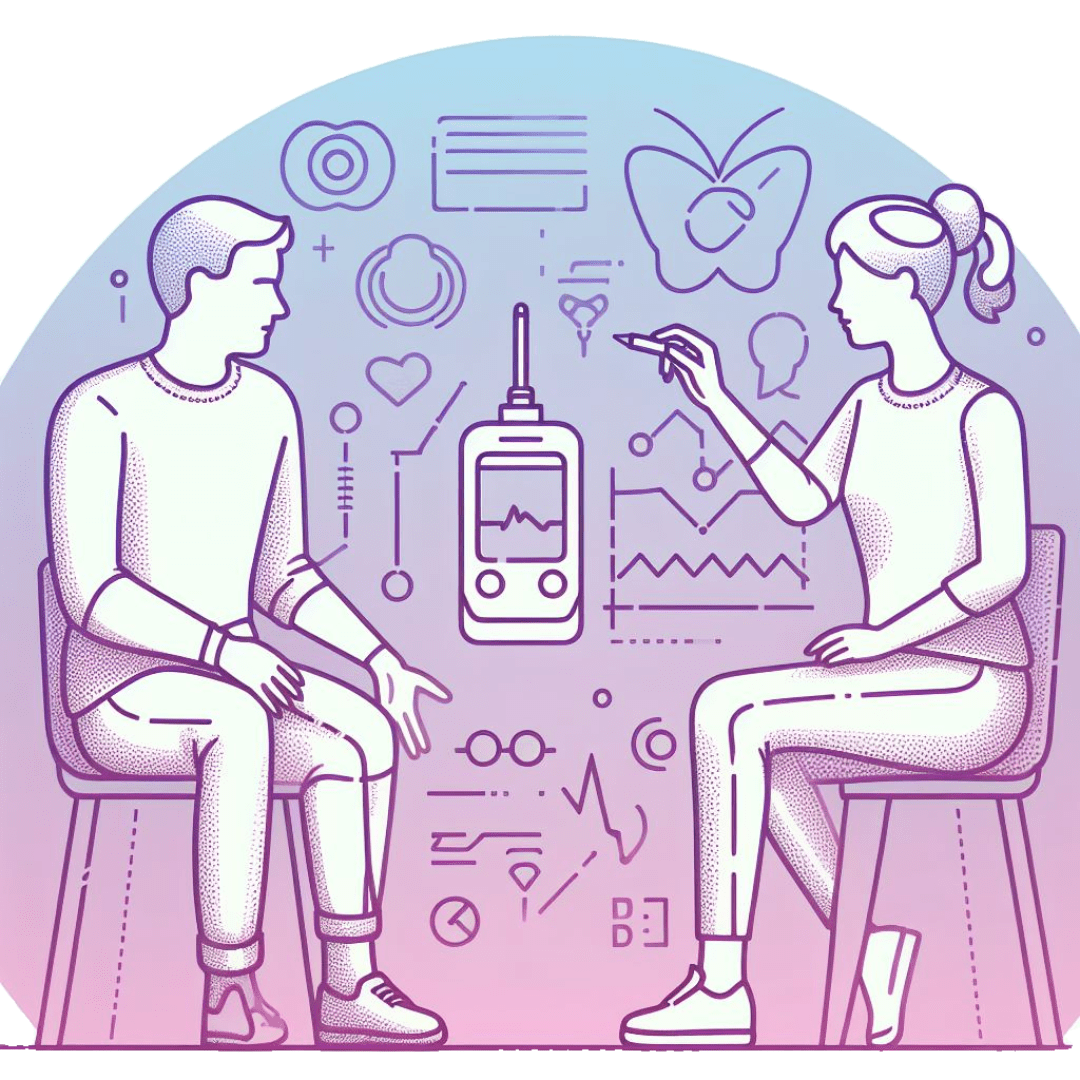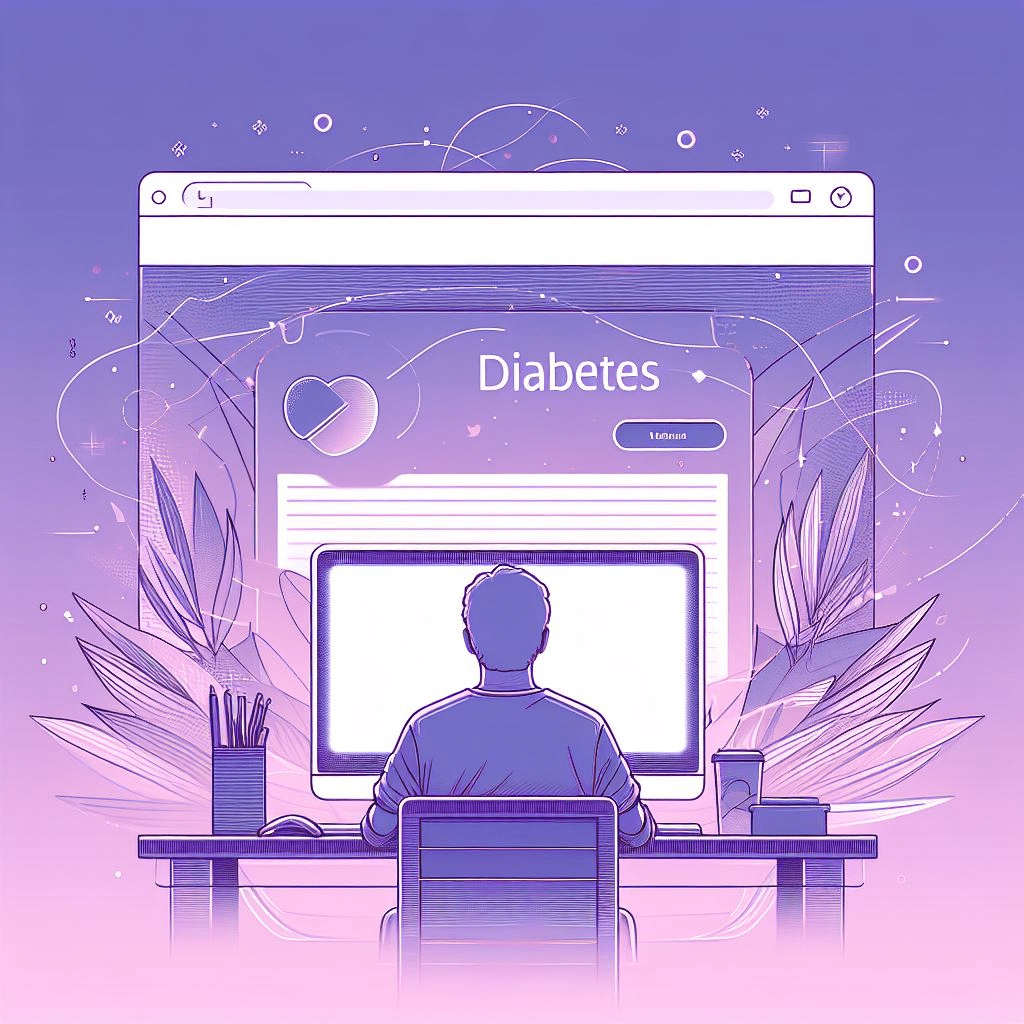The Basics of Diabetes Mellitus
–
You don’t need to be a nurse or healthcare professional to have even the smallest amount of knowledge about diabetes.
Over 4 million people in the UK are affected by diabetes.
Now, times that by a hundred and you start getting closer to what the worldwide statistics for diabetes are looking like.
(And that’s only the people who have had confirmed diagnoses).
So, with those numbers, the chances are highly likely that you know someone or have come across a patient with diabetes already.
But how much can you say that you really know about diabetes?
And as a healthcare professional, are you confident that if a student nurse, colleague, patient or their relative asked you the following questions that you would be able to give them the most basic answers:
What is Diabetes Mellitus?
Diabetes is a metabolism disorder that affects how your body uses sugar – glucose – for energy.
Glucose is essential for your health as it fuels your cells and organs.
But too much or too little glucose can cause problems.
Normally, your pancreas produces a hormone called insulin which helps glucose move from your blood into your cells.
But if you have diabetes, either your pancreas cannot make enough insulin, or your cells cannot use it properly.
This leads to high blood sugar levels which can damage your heart, blood vessels, eyes, kidneys and nerves.
✾ The term “Diabetes” derives from a Greek word meaning “to pass through” which refers to the excessive urination of uncontrolled diabetes.
✾ “Mellitus” is a Latin word for “sweet” or “honey” which was added when it was discovered that the urine from people with diabetes contains glucose by curious doctors who tasted the pee and found out it was sweet!
What are the Different Types of Diabetes?
People often forget to differentiate between the types of diabetes, including the varying causes and treatments.
However, it is vital that anybody in charge of the care of someone with diabetes can understand the difference.
The most common types of diabetes are:
Type 1 Diabetes
This is an autoimmune disease where the immune system attacks and destroys the cells in the pancreas that make insulin.
For this type of diabetes, the person will need to take insulin injections or use an insulin pump to manage their blood sugar levels.
Type 1 diabetes usually develops in childhood or adolescence, but it can occur at any age.
Type 2 Diabetes
This is a metabolic disorder where the body becomes resistant to the effects of insulin, or the pancreas cannot produce enough of it.
A type 2 diabetic may need to take medication, such as tablets or injections, to lower their blood sugar levels.
Type 2 diabetes is more common in adults, especially those who are overweight or obese, have a family history of diabetes or have an overall unhealthy lifestyle.
Non-diabetic Hyperglycaemia (or Pre-Diabetes)
This is where the patient’s blood sugar levels are higher than normal, but not high enough to be diagnosed as having diabetes.
This is a warning sign that they are at risk of developing type 2 diabetes in the future, but they can still prevent it by making some lifestyle changes.
Gestational Diabetes
This is a temporary condition that occurs during pregnancy, when the hormones affect how the body uses insulin.
It usually goes away after the woman gives birth, but it can increase their risk of developing type 2 diabetes later in life.
Monitoring of blood sugar levels and following a healthy diet and exercise plan may be needed to manage their condition.
Steroid Induced Diabetes
Steroids, also known as corticosteroids, are artificial versions of hormones that are naturally produced by your body.
They are used to reduce inflammation and can help to treat a wide range of conditions, including severe asthma, cystic fibrosis, arthritis, inflammatory bowel disease and some types of cancers.
However, a side effect of steroids is the impact it can have on blood sugar levels.
They can make your body produce more glucose, prevent glucose from being used by your cells, and make your insulin less effective.
This leads to too much glucose in your blood which can cause damage to your body over time.
Most people will only have steroid-induced diabetes while they are taking steroids. Their blood sugar level usually goes back to normal when they stop.
But others may have steroid-induced diabetes even after they stop their treatment, especially if they have some risk factors for type 2 diabetes.
The World Health Organisation (WHO) classifies diabetes into four categories:
✾ Type 1 is an autoimmune disorder that destroys insulin-producing cells.
✾ Type 2 is a condition of insulin resistance or deficiency, often linked to obesity and inactivity.
✾ Gestational diabetes occurs during pregnancy and usually resolves after delivery.
✾ Other specific types are rare forms of diabetes caused by various factors.
What are the Causes and Risk Factors of Diabetes?
Type 1 Diabetes
The exact trigger for this autoimmune response is still a mystery, but it can be said to be:
Genetic
OR
Related to their environment – Dietary habits, exposure to vitamin D, obesity, early exposure to islet inflammation-causing viruses.
Type 2 Diabetes
This is a common and preventable type of diabetes where the patient’s lifestyle choices affect how their body uses insulin.
There are a number of factors that can raise the risk of developing type 2 diabetes:
- Being overweight or obese (especially around the waist)
- Being physically inactive
- Having a family history of type 2 diabetes
- Being from certain ethnic backgrounds (such as Asian, African or Afro-Caribbean)
- Having metabolic syndrome, which is a combination of health problems, such as high blood pressure, high cholesterol, fatty liver disease and blood clots
- Having a diet that is low in fibre and high in sugar
- Having polycystic ovary syndrome
✾ It’s important to note that while these factors can increase the risk of developing diabetes, they do not guarantee that an individual will develop the condition.
✾ The good news is that a person can also change these factors to improve their health and prevent complications.

What are the Signs and Symptoms of Diabetes?
Polyuria (Increased Urination)
The kidneys are responsible for filtering the blood and removing any waste products, such as excess glucose.
When someone’s blood sugar levels are too high, the kidneys have to work harder to get rid of the extra glucose.
This means that they draw more water from the diabetic body, which makes the urine more diluted, producing even more urine and therefore increasing the frequency of needing to go toilet.
Polydipsia (Increased Thirst) and Having a Dry Mouth
The brain is constantly monitoring fluid levels and sending signals to the body to maintain a balance.
When a person loses fluid from their urine, the brain detects that they are dehydrated and tells them to drink more water.
This is why a diabetic person would feel thirsty and have a dry mouth.
Feeling Tired and Weak
The body normally uses insulin to help glucose move from the blood into the cells.
But if someone has diabetes, either their pancreas cannot make enough insulin, or their cells cannot use it properly.
This means that glucose stays in your blood and your cells do not get enough of it.
As the cells are not functioning properly, due to the lack of glucose, and as it is not producing energy as it should, it leads to fatigue.
Unexplained Weight Loss, but Experiencing Hyperphagia (Constant Hunger)
When the cells do not get enough glucose, they start to break down other sources of energy, such as fat and muscle, leading to unplanned weight loss and a constant feeling of hunger.
Blurry Vision
The eyes have a clear lens that helps to focus on what you see.
But when the blood sugar levels are too high, it can cause fluid to move in and out of different parts of the eye.
This can make your lens swell and change its shape, which affects how well it can focus light onto the retina (part of the eye that converts light into signals that the brain can understand), which leads to the vision becoming blurry and distorted.
Also, high blood sugar levels can damage the blood vessels that supply the retina itself with oxygen and nutrients.
This can cause bleeding, swelling or scarring of the retina, which can affect the vision and even lead to blindness.
Numbness or Tingling in the Hands or Feet
The nerves are like wires that carry messages from the brain to the body, and from the body to the brain.
But with high blood sugar levels caused by diabetes, it can damage the nerves and affect their ability to send and receive signals.
This can cause pain, numbness, tingling or weakness in the hands and feet.
Slow Healing Sores or Cuts
The blood vessels carry oxygen and nutrients to the tissues, and waste products away from them.
But the blood vessels can become damaged from diabetes and make them narrow or clogged and reduce blood flow.
Along with the poor circulation, there is the added issue of nerve damage and a weakened immune system which all contribute to the interference of the body’s ability to heal wounds, especially in the feet and legs.
This can cause ulcers, which are open sores that do not heal easily.
Ulcers can be painful, get infected, or can even lead to amputation if not treated properly.
Itching or Thrush in the Genitals
The genitals have a natural balance of bacteria and fungi, such as yeast, that keep them healthy and clean.
But when the blood sugar levels are too high, it can cause excess glucose to spill into your urine and onto your genitals.
This can create an ideal environment for yeast to grow and multiply, upsetting the natural balance.
These symptoms can affect anyone, regardless of their age or gender. But some of them are more common in people with type 1 diabetes, and they can appear very quickly.
✾ These symptoms are entirely dependent on the person and that not everyone with diabetes will experience these symptoms.

You know exactly what to look for, so if you experience any signs and symptoms, look after yourself and go see your GP. Healthcare professionals aren’t immune to diabetes.
What Conditions are Commonly Associated with Diabetes?
Heart Disease
Diabetes can damage the blood vessels and make them narrow or clogged. This can reduce the blood flow to the heart and brain and increases the risk of having a heart attack or stroke.
Nephropathy (Kidney disease)
Diabetes can damage the kidneys and make them less able to filter the blood and remove excess fluid and waste. This can cause swelling, high blood pressure and kidney failure.
Retinopathy (Eye Problems)
Diabetes can damage the eyes and affect the vision. This can cause blurry vision, cataracts, glaucoma or diabetic retinopathy, which is a serious eye disease that can lead to blindness.
Neuropathy (Nerve Damage)
Diabetes can damage the nerves and affect how a person feels and moves. This can cause pain, numbness, tingling or weakness in the hands and feet. It can also affect the digestion, bladder and sexual function.
Foot Problems
Diabetes can damage your feet and make them more prone to infections and ulcers.
This can be caused by nerve damage, poor circulation or high blood pressure.
If left untreated, foot problems can lead to amputation.
Gum Disease and Other Mouth Problems
Diabetes can affect a person’s oral health and make their mouth more susceptible to bacteria and plaque. This can cause gum disease, tooth decay, bad breath or a dry mouth.
Sexual Problems
Diabetes can affect sexual health by making it harder to enjoy sex. This can be caused by nerve damage, blood vessel damage or hormonal changes.
It can affect both men and women, and cause problems such as erectile dysfunction, vaginal dryness or low libido.
Coeliac Disease, Thyroid Disease, and Haemochromatosis
These are some of the other conditions that can be linked to diabetes. They are caused by problems with the immune system, hormones or iron levels. They can affect the digestion, metabolism or blood cells.
✾ Necrobiosis lipoidica diabeticorum is a rare dermatological condition that manifests as red or brown lesions on the legs, often triggered by diabetes.
So there you have it.
You should now be able to confidently give information to anybody who asks you about the different types of diabetes, why people get it, the sign and symptoms, and even some of the most common conditions caused by diabetes.

Question Time
Read the questions and if you have the answers, flaunt your knowledge and share your thoughts and experiences in the comment section below.

How confident are you that you can answer a student nurse, colleague, patient or relative about a diabetes-related question now?
Without searching or scrolling up, can you list all the signs and symptoms of diabetes that you can remember?
Do you have any memorable stories about a patient or someone you know with diabetes? (Make sure to maintain confidentiality or if you want to keep it anonymous, then share it to ‘Nursing Tales’).








